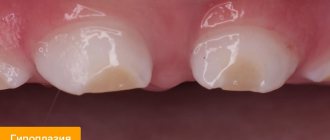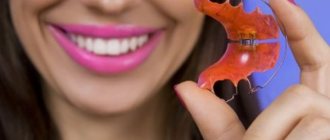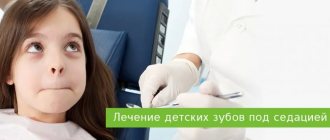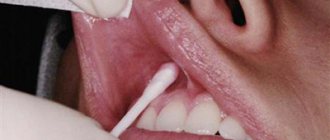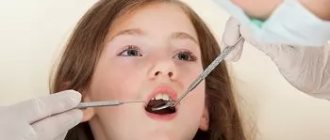Treatment of dental anomalies (deviations) should begin in childhood, because they can cause multiple problems: the formation of malocclusion, deformation of facial features, incorrect diction.
Interesting! Dentists often encounter very unusual and curious anomalies. For example, one Indian guy had 232 teeth removed. The thing is that the teenager was diagnosed with a tumor on the lower jaw, consisting of teeth. Another interesting case occurred in Saudi Arabia. A young man had a tooth that was growing in his nose removed.
What are the anomalies?
Dental anomalies can be congenital or acquired. Dental defects are a common pathology, especially in preschool children. Therefore, it is important not only to carry out treatment on time, but also to visit a doctor for early detection of disorders.
Types of deviations:
- teeth that are too big or small;
- abnormal number of teeth;
- irregular shape;
- defect in the structure of hard tissues;
- early or late periods of eruption;
- incorrect location;
- non-standard enamel color;
- malocclusion.
Why is it necessary to treat such defects?
Because dental pathologies lead to:
- deformations of the jaws and facial features;
- malocclusion;
- inability to bite and chew food normally;
- problems with the gastrointestinal tract;
- speech defects;
- low self-esteem.
Dental problems, if left untreated, will lead not only to an unattractive smile, but also to problems with the gastrointestinal tract (gastritis, ulcers). Psycho-emotional personality disorders are also likely: low self-esteem, stress and depression due to ridicule from peers. All this significantly affects not only the quality of life of the child, but also the future of the adult.
Treatment methods for maxillofacial anomalies and deformities
Treatment methods for maxillofacial anomalies and deformities are very diverse. Their choice depends on the age of the child, the cause of the deformation, the clinical form and severity of the anomaly, the stage of development of the teeth and jaws, as well as the general condition of the child and his psycho-emotional maturity. All treatment methods are conventionally divided into: preventive, instrumental, combined (using physiotherapeutic, surgical methods of intensification), surgical. The hardware method is the main one for the treatment of maxillofacial anomalies and deformities, and all the others are auxiliary.
The occurrence of dental pathologies can be prevented only by timely elimination of the causes that cause them or contribute to their occurrence. Prevention of jaw diseases, including malocclusion pathology, is carried out both by general and local measures. All preventive treatment methods can be divided into the following periods:
- the period before the conception of a child (future parents contact medical genetic offices at family planning centers and antenatal clinics)
- intrauterine period
- lactation period (the first half year of a child’s life)
- period from 6 months to the end of the temporary dentition (1.5-6 years)
- period of mixed dentition (6-13 years)
- period of permanent occlusion (from 13 years of age)
In the process of medical genetic counseling, the following points are determined:
- whether any of the future parents suffer from infectious diseases that can indirectly cause spontaneous chromosomal mutations, whether they suffer from hereditary diseases and whether they are carriers of such diseases;
- is there a risk for a particular couple to have a child with hereditary malformations in the maxillofacial area;
- what help parents can get in making decisions after a prenatal diagnosis of the fetus;
- what preventive and therapeutic measures can a newborn child receive if he or she has a genetically determined developmental defect of the cerebral palsy, where assistance will be provided, in what sequence and at what age periods.
Prenatal period
General measures to prevent the occurrence of anomalies and deformations of the maxillofacial area include the prevention of injuries, various diseases and metabolic disorders of a pregnant woman. It is important to protect the expectant mother from harmful mental, physical, and chemical influences, to create comfortable working and living conditions for her. A nutritious diet (balanced in vitamins and microelements), spending time in the fresh air are an integral part of prevention. One of the important aspects at this stage is physiological childbirth without the use of obstetric operations (forceps, vacuum, etc.), the baby should be breastfed.
Lactation period
At this stage, the mode and nature of feeding are decisive. It is necessary to ensure the correct position of the child during sleep. Of course, breastfeeding is a priority. In the case of artificial feeding, it is necessary to take a number of measures to imitate breastfeeding as much as possible - this includes selecting a nipple for a bottle in terms of elasticity similar to the mother’s nipple, this is monitoring the position of the bottle during feeding (the child should make an effort to suck out the milk, and not passively swallow the pouring milk). mouth mixture, you must ensure that the bottle does not put pressure on the child’s lower jaw to avoid its deformation). It is also necessary not to forget about the prevention of bad habits in infants - thumb and fist sucking; for this, children put booties on their hands. A correctly selected pacifier is another point of control at this stage. General measures include monitoring the balance of nutrition, sufficient insolation of the child, keeping him in the fresh air, monitoring nasal breathing, preventing ARVI, etc.
Period of temporary occlusion
During the period of primary occlusion, general prevention comes down to the prevention of childhood infectious diseases (scarlet fever, measles, diphtheria, polio, etc.), as well as metabolic disorders, especially calcium. The fight against rickets, treatment of endocrine disorders, diseases of the nose and larynx are directly related to preventive measures.
If these diseases are detected, children should be referred to a specialized specialist.
During the period of temporary occlusion, the main goal of treatment is to create conditions for normal growth and development of parts of the maxillofacial apparatus using myogymnastics, as well as the corresponding pathology of the equipment. The latter is intended not so much for moving teeth, but for stimulating the growth of underdeveloped parts of the jaws and normalizing the relationship of the dentition. In addition, with the help of simple orthodontic devices (bite release crowns, mouth guards or plates), blocking of individual groups of teeth is removed, thereby eliminating the mechanical reasons that impede the growth of the corresponding part of the jaw and the movement of the lower jaw into the correct position. At this age, such designs of devices are also used that implement a therapeutic effect by changing the function of the muscles of the maxillofacial area of the child, the so-called myofunctional trainers.
The nature of the food (except for the aspect of balancing the diet with vitamins and microelements), its consistency is of great importance for the normal development of the masticatory apparatus. Children who suffer from the so-called “laziness of chewing” do not have developed chewing muscles, and this in turn leads to secondary deformations of the dental system. It is necessary to teach such children to grind food correctly (intensively, energetically, quickly, often), thereby helping them develop chewing muscles and develop the habit of actively chewing food. This can be achieved if you give the child, instead of cereals and liquid food (that is, soft), fairly hard food - an apple, cracker, carrot, etc. Food of this consistency requires increased chewing efficiency, and ultimately leads to the development of chewing muscles.
It is also necessary to treat diseased teeth from an early age. The treatment of temporary second teeth and sixth permanent teeth deserves special attention; they need to be kept healthy for an extremely long time. It is necessary to conduct hygiene lessons with the child, control by parents while brushing teeth, and if caries is detected, its timely treatment. It is necessary to explain to parents that temporary teeth, despite the short period of service, must be full throughout the entire period of their existence; otherwise, carious teeth and their early removal can lead to osteomyelitis, shortening of the dental arch, as a result of crowding of permanent teeth, and a decrease in height bite, etc. negative consequences.
As for bad habits, of course, it is necessary to use maximum efforts on the part of the parents, doctor and child to eliminate them! For example, if a child bites his lower lip, as a result of this there is excessive development of the upper jaw or protrusion of the front teeth of this jaw and underdevelopment of the lower jaw, it is necessary for a certain period of time to reorient the child to biting the upper lip, thereby slowing down the growth of the upper jaw and strengthening the lower one. Bad habits develop in children during the period of growth, when the bones of the skull are extremely malleable and therefore easily deformed. Fingers, tongue, cam are an artificially created platform on which teeth slide, in contrast to natural inclined planes, which are the palatal surfaces of the frontal teeth and tubercular slopes during eruption, which give the wrong direction to the eruption and growth of permanent teeth.
Measures for the prevention and treatment of malocclusions at an early age should also include general gymnastics (prevention of scoliosis, kyphosis, lordosis, etc.) and special exercises for the chewing and facial muscles. The muscle groups that are trained for malocclusion are the masticatory muscle, the temporalis muscle, the pterygopalatine muscle, the orbicularis oris muscle, and the neck muscles.
Changeable period of occlusion
Local (special) prevention includes sanitation of the child’s oral cavity. Of particular importance for preventing sagittal or lateral displacement of the lower jaw, that is, forced protrusion or crossbite, is the grinding of the tubercles of temporary canines, those that have not been worn down, and other teeth. In case of premature loss of temporary or permanent teeth, as well as in case of fracture of the crown part of these teeth, timely rational prosthetics is indicated.
To prevent malocclusion, it is necessary to monitor the replacement of temporary teeth with permanent ones. If temporary teeth are retained in the dentition, they must be removed; a prerequisite for this is the presence of the germ of a permanent corresponding tooth, which can be seen on the control radiograph. Super complete teeth are also subject to removal, which prevents abnormal eruption of complete teeth. Sometimes it is more expedient to remove a complete damaged tooth and leave the additional one as a healthy replacement.
An extremely effective preventive measure is dissection of a shortened or incorrectly attached frenulum of the tongue and lips.
Prevention also includes myogymnastics, some simple hardware interventions, especially bite communication, movement of individual teeth, etc.
Treatment during the transitional period of occlusion is carried out mainly with a variety of devices that serve to straighten the position of the teeth, the shape of the dental and alveolar arches and the relationship of the dentition. Hardware treatment is often combined with myogymnastics, which is more effective in the first half of the mixed dentition than in the beginning. Instead of exclusively preventive measures characteristic of temporary dentition, the doctor in mixed dentition uses prevention in close combination with treatment with removable and non-removable appliances.
Permanent bite
During the period of permanent dentition, the possibilities of prevention are significantly limited. At this age, it is almost impossible to influence the growth of the dentofacial apparatus, since it is already almost complete. Therefore, it is carried out with the help of non-removable or removable equipment, mainly by moving teeth and correcting the relationship of the dentition.
Sometimes hardware treatment is carried out together with surgical intervention, such as removal of individual teeth, osteotomy, decortication, compactosteotomy. In severe forms of open bite, progenia, or prognathia caused by anomalies in the development of the jaws, special operations are performed in conjunction with hardware treatment.
But the main factor in successful treatment and prevention at any stage of development of the maxillofacial apparatus is and will be a good relationship between the child, parents and doctor; all actors in this complex and not always easy process should remember this.
Kuzmenko Irina Borisovna
For what reasons can dental defects occur?
- Genetic - various features of the dental apparatus are inherited from parents to children: irregular size and shape, disruption of the structure and functions of soft tissues.
- Endocrine – hypothyroidism, hyperparathyroidism, hypocortisolism, pituitary dwarfism.
- Exogenous – disorders develop against the background of adverse effects of external factors during intrauterine development; various disorders during pregnancy; intrauterine infections; birth injuries.
- Local - early artificial feeding, thumb sucking, feeding preschool children only with crushed food, mechanical damage to teeth, short frenulum, early caries, dental plaque.
Causes of abnormal bite development in children
According to experienced orthodontists, more than 50% of children develop malocclusion due to hereditary predisposition. In other patients, developmental defects are acquired.
Causes of malocclusion:
1. Bad habits of the baby - thumb sucking, prolonged use of a pacifier, biting lips and tongue.
2. Artificial feeding of the baby.
3. Incorrect head position during sleep.
4. Early loss of baby teeth.
5. Breathing through the mouth.
6. Diseases of the ENT organs of a chronic nature.
Treatment of disorders
Treatment of anomalies is performed at any age, but it is better to begin therapy during the period when the primary occlusion develops. Some dental abnormalities should only be treated at a certain age.
The following techniques can be used:
- hardware;
- hardware-surgical;
- surgical;
- functional (myogymnastics).
Myotherapy is therapeutic exercises. Thanks to systematic long-term exercises, the functions of muscles that are poorly developed are stimulated, the growth of the jaws and the symmetrical development of the entire face are normalized. This method of treatment is most effective in preschool age.
Hardware therapy is a mechanical effect on the departments, as a result of which the tissues of the dental system are rebuilt. Devices can be removable or non-removable.
When hardware treatment does not produce a positive result, complex therapy is used, which includes surgery.
Complications after treatment
- significant expansion of supporting teeth;
- inflammation of the gums;
- caries;
- hemorrhage into tissue.
Types of pathological bite
Modern orthodontics identifies five key forms of pathological occlusion:
- mesial (mandibular bone protrudes significantly forward);
- distal (the front part of the upper row of teeth protrudes significantly forward);
- deep (mandibular incisors are overlapped by upper incisors by more than ½ length);
- open (in this case, part of the teeth on both jaws cannot close, forming a gap);
- cross (one or both sides of one of the jaws are underdeveloped).
Some researchers include in this classification such disorders as diastema and dystopia. Dystopia is a pathology of occlusion in which individual teeth are located outside their standard position in the dentition. In turn, the term diastema refers to such a violation of the position of the teeth, in which a gap is formed between adjacent central incisors, having a width of up to 6 mm.
Preventive methods
Thanks to an integrated approach, the use of ultra-modern therapeutic dentistry, innovative surgical treatment methods, anomalies are eliminated and the normal functioning of the dentofacial apparatus is restored.
Preventive methods include:
- adhere to a healthy lifestyle during pregnancy, eliminate stress;
- eat rationally;
- promptly correct endocrine disorders;
- Regularly visit the dental office for diagnostics and identification of anomalies.
It is important to monitor the baby's health immediately after birth. An important role is played by early breastfeeding, nutrition rich in vitamins and all necessary substances. All this will help to avoid various anomalies.
Consequences of prolonged pacifier sucking and bottle feeding
If a child uses a pacifier for a long time, he may develop an open bite. A pacifier placed between the child's jaws puts constant pressure on the front teeth - the upper teeth protrude forward, the lower ones, on the contrary, back. In addition, the child may experience the following problems: narrowing of the upper dentition, reverse incisor overlap, or delayed growth of the lower jaw. If the child is gradually weaned from the pacifier by the age of 2, then the problems that have arisen can go away with the help of correction with vestibular plates.
If weaning from the pacifier does not occur by this age, then most likely the child will have to be treated by an orthodontist.
If you feed your baby incorrectly from a bottle with a nipple, this, along with the formation of an open bite, can lead to bottle caries. First of all, the upper front teeth are affected. For healthy teeth and the formation of a correct bite, it is necessary to promptly transfer the child to solid food. In addition to caries and its complications, malocclusion is fraught with disorders of chewing and speech development, which affects the overall development of the child.
Diagnostics
An experienced dentist diagnoses dental abnormalities after an external examination and questioning of the patient. To clarify the diagnosis and identify the causes of the disease, a more detailed examination of the dental system is carried out:
- The construction of diagnostic plaster models and odontometric measurements make it possible to accurately identify changes in the size of dental units and their characteristics, which indicate the presence of pathologies.
- The color and transparency of the enamel are determined using a photographic method.
- Computed tomography or teleradiography makes it possible to obtain information about the condition of abnormal dental units in order to determine further treatment tactics.
- Panoramic radiography of the jaws is an important diagnostic method
- Electromyography of the jaws helps to assess the functional state of the facial muscular system.
To carry out differential diagnosis, the patient is referred for consultation to specialized specialists: endocrinologist, otolaryngologist, geneticist. Based on the diagnostic results, the attending physician determines treatment tactics. Depending on the type of disorder and the complexity of the disease, the patient may need the help of a dentist, surgeon, orthopedist, or implantologist.
